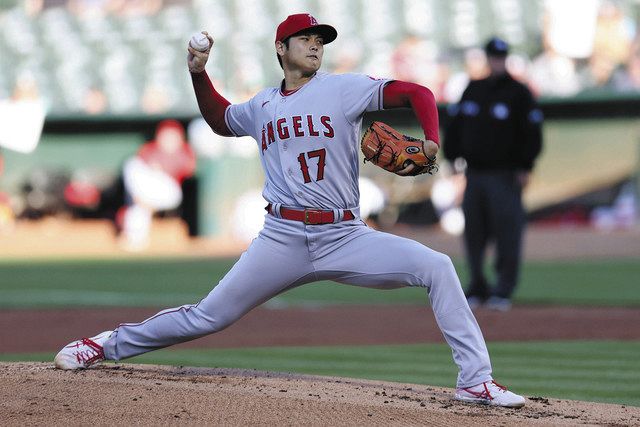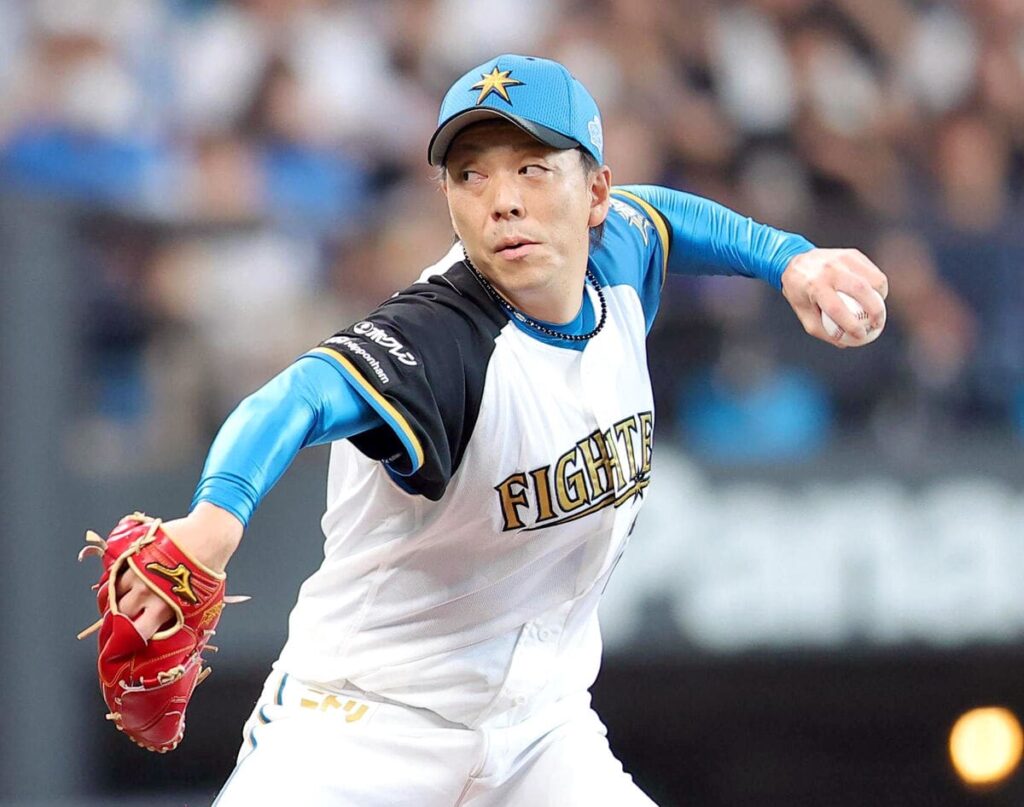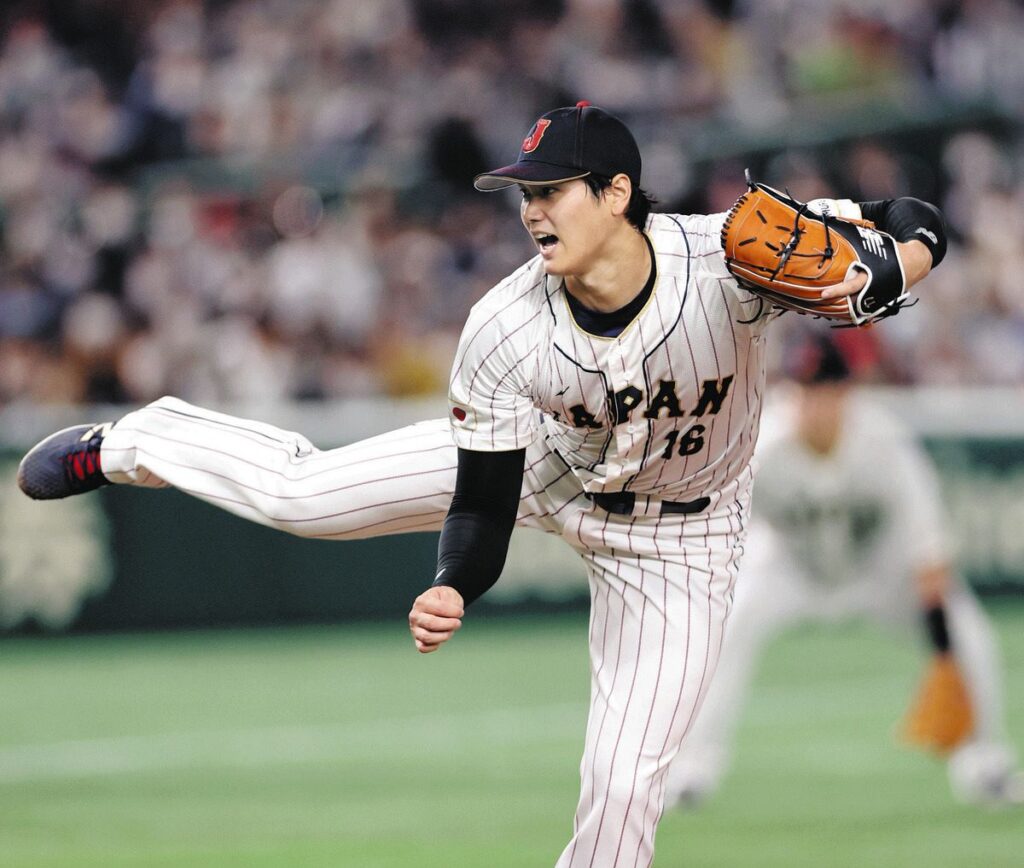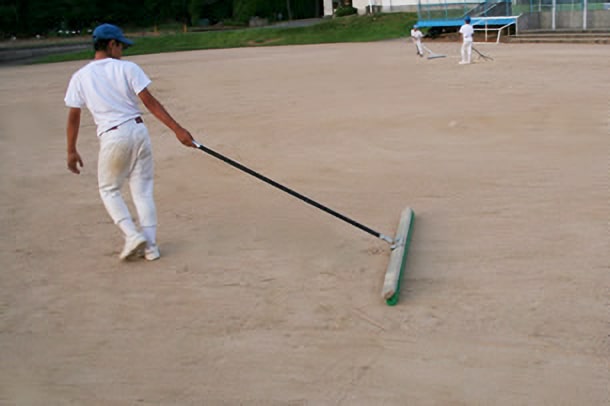
In junior high school baseball, the distance of the mound has a significant impact on the course of the game and the pitcher’s performance.
In this article, we will take a detailed look at the standards for mound distance in junior high school baseball and its importance, and also touch upon how to choose the appropriate distance, how to measure it, and how it relates to training.
Additionally, we will also consider how to utilize mound distance in actual games.
Please use this as a reference for players and coaches who will be competing in junior high school baseball in the future.
目次
- 1 What is the mound distance in junior high school baseball?
- 2 Standard mound distance in junior high school baseball
- 3 How mound distance affects pitchers
- 4 How to choose the right mound distance
- 5 How to measure mound distance and points to note
- 6 Relationship between training and mound distance
- 7 How to use mound distance in an actual game
What is the mound distance in junior high school baseball?
The distance of the mound in junior high school baseball has a significant impact on the quality of the game and the development of the players.
Here we’ll take a closer look at the basic rules and standards, and why this distance is important.
Basic Regulations and Standards
In junior high school baseball, the distance from the mound to home plate is generally set at 60 feet 6 inches (about 18.44 meters).
This distance is based on the same standards as professional and high school baseball.
This uniform distance is intended to allow players a smoother adjustment as they progress to the next level.
Detailed policy information :
-
Mound height : The height of the mound is also an important factor. In junior high school baseball, the mound height is about 10 inches (about 25 cm), the same as in professional and high school baseball. This height is considered optimal for the pitcher to get the natural weight transfer and the help of gravity when throwing the ball.
-
Mound Slope : The slope of the mound affects the pitcher’s balance and the quality of the throw. Ideally, the slope should be 1 inch for every foot from the center toward home plate. This slope allows the pitcher to perform a stable throwing motion.
-
Other Field Elements : There are other regulations for junior high school baseball fields, including the distance between bases and the size of the outfield. These elements are important to provide an overall balanced playing environment.
Why is distance important?
The distance from the mound to home plate is important in junior high school baseball because it has a major impact on pitcher performance, batter development, and the overall quality of the game.
Pitcher performance :
-
Improved Technique : The proper mound distance helps pitchers master proper pitching form. The 60′ 6″ distance meets the technical standards at the professional level, which is important for middle school players to build a foundation for future high school and professional success.
-
Physical fitness : The right distance also contributes to the pitcher’s physical fitness. A distance that is too short puts too much strain on the pitcher’s arms and shoulders, increasing the risk of injury. Conversely, a distance that is too long puts too much strain on a young player and makes it difficult to maintain proper form.
Batters Development :
-
Improve batting technique : Pitching at the right distance allows hitters to practice reacting to fastballs and curveballs, which helps them develop batting technique that can be adapted to professional-level pitching.
-
Balanced Competition : Proper mound distance is important to maintain balance in the game. Proper distance makes the matchup fair between batters and pitchers and makes the game more exciting.
Quality of the match :
-
Consistency of Competition : Having the same mound distance in junior high school baseball as in the pros provides a consistent playing environment, allowing players to smoothly transition to the next level of play and improving the overall quality of competition.
-
Player Health Management : A mound with the appropriate distance and height also contributes to player health management. By avoiding excessive strain and maintaining correct form, players will be able to support their long-term growth and health.
Mound distance in junior high school baseball is an important factor that significantly affects player development and the quality of the game.
Proper distance and height settings provide the foundation for players to improve their skills, stay healthy and grow.
This will create a better competitive environment for middle school baseball and better prepare players to succeed at the next level.
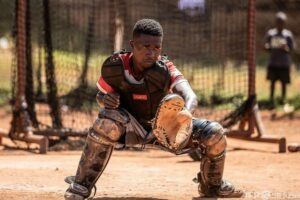
Standard mound distance in junior high school baseball
In junior high school baseball, the mound distance has a significant impact on player development and the quality of the game.
Here we will take a closer look at the regulations of the Junior High School Baseball Federation and compare them with international standards.
Junior High School Baseball Association Regulations
The Junior High School Baseball Association sets the basic rules and regulations for junior high school students to play.
These regulations are important to ensure the development and safety of our players.
Mound distance standards : In junior high school baseball, the distance from the mound to home plate is generally 54 feet (about 16.46 meters). This distance is suitable for the physical strength and skill level of junior high school students who are still growing, and provides a suitable pitching environment. Although it is shorter than high school baseball and professional baseball, this allows players to learn pitching form without straining themselves.
Purpose of the regulation : The purpose of the Junior High School Baseball Federation setting this distance is to promote the technical growth of players. By maintaining an appropriate mound distance, players can acquire accurate control and pitching power. In addition, because it puts less strain on the players, it reduces the risk of injury and allows them to continue playing safely.
Comparison with international standards
How does mound distance in junior high school baseball compare to international standards?
Comparison with Little League : Little League uses a distance of 46 feet for players ages 12 and under, and 60 feet 6 inches for players ages 13 and over. Middle school baseball’s 54-foot distance is halfway between Little League and high school baseball, making it ideal for players still developing.
Comparison with high school baseball : In high school baseball, the distance from the mound to home plate is 60 feet, 6 inches (about 18.44 meters). The distance in junior high school baseball is shorter, but this allows players to throw the ball comfortably and improve their physical strength and technique. It also allows for a smooth transition when they move on to high school.
Harmony with international standards : The International Baseball Federation (WBSC) recommends a distance of 60 feet 6 inches (approximately 18.44 meters) for players in junior leagues (ages 13 and over). The distance of 54 feet for junior high school baseball is between the international standard and high school baseball, and is set with the aim of developing players who can compete on the international stage.
The regulations regarding mound distance in junior high school baseball play an important role in balancing player skill improvement and safety.
As can be seen from a comparison of the Junior High School Baseball Association regulations with international standards, this distance setting provides an optimal environment for players during their development, marking an important step towards their future baseball careers.
With precise regulations and a proper training environment, middle school players will be able to aim to play at a higher level.

How mound distance affects pitchers
In junior high school baseball, mound distance has a significant impact on a pitcher’s performance and safety.
Official rules normally stipulate that the distance between pitcher and batter is 18.44 metres, but this distance is directly related to pitching style and physical strain.
Selecting the appropriate mound distance is essential to a pitcher’s development and injury prevention.
Changes in pitching style due to differences in distance
Different mound distances will affect a pitcher’s pitching style.
As the distance decreases, pitchers tend to throw a higher percentage of fastballs, which make them harder for batters to hit because of reduced reaction time.
On the other hand, as the distance increases, pitchers tend to use more curveballs and place more emphasis on control.
For example, when the distance is short, the pitcher must adjust the release point and be more creative with the ball’s trajectory.
This allows him to increase the speed of his fastball, giving him an advantage over hitters.
On the other hand, if the distance is long, the pitcher is required to make the curve of his breaking ball larger in order to throw off the batter’s timing.
As such, differences in mound distance have a significant impact on a pitcher’s strategy and technique.
Physical burden and measures to deal with it
The mound distance also has a significant impact on the strain placed on the pitcher’s body.
As the distance decreases, pitchers have to throw the ball more forcefully, which puts more strain on the shoulders and elbows.
On the other hand, if the distance is long, you will need to use more force to throw the ball farther, which puts more strain on your whole body.
The following measures are effective in reducing the strain on a pitcher’s body:
-
Proper warm-up : Warming up before pitching helps to keep muscles and joints flexible and helps prevent injury. It is important to stretch thoroughly, especially the shoulders and elbows.
-
Learning the correct form : If your pitching form is not proper, excessive strain will be placed on certain parts of the body, increasing the risk of injury. It is important to learn the correct form under the guidance of a coach.
-
Adequate rest : Pitchers need to rest sufficiently after pitching to promote muscle and joint recovery. It is important to avoid excessive practice and consecutive pitches and to rest the body.
-
Physical training : By incorporating training to strengthen the shoulders, elbows, and core muscles, the burden placed on the body during pitching can be reduced, leading to the prevention of injuries. Strengthening the inner muscles around the shoulders is particularly effective.
New research shows that proper mound distance, combined with proper training methods, can improve pitcher performance while minimizing the risk of injury.
Therefore, coaches and players are required to understand the importance of mound distance and adopt a scientific approach.
As you can see, mound distance has a wide range of effects on pitchers, but taking appropriate measures can support a pitcher’s development and health.

How to choose the right mound distance
In junior high school baseball, selecting the appropriate mound distance has a significant impact on the pitcher’s performance and safety.
Although the official rules prescribe a certain distance, it must be adjusted according to the age and physique of the players.
Here we will explain how to choose the appropriate mound distance.
How to adjust according to age and size
It is important to adjust the mound distance according to the pitcher’s age and physique.
The official mound distance in junior high school baseball is 18.44 meters, but adjusting it to suit the player’s stage of development can help improve performance and prevent injuries.
For example, since athletes who are still growing do not have enough muscle strength or stamina, it is effective to set a shorter distance to avoid excessive strain.
Conversely, players with strong physiques or excellent pitching skills can improve their ability to perform in a match by practicing at a distance closer to the official distance.
Coaches and trainers should also set optimal distances for each athlete based on their individual fitness test results and level of development.
This type of individual attention supports the development of players and leads to improved long-term performance.
Tips for maximizing your team’s performance
Selecting the appropriate mound distance will affect not only the performance of individual players but also the performance of the entire team.
By considering the following points, you can maximize the performance of your entire team.
-
Balanced rotations : When creating a pitcher rotation, you can maintain effective pitching by considering each pitcher’s characteristics and preferred distances. For example, by alternating between a pitcher who is good at fastballs and a pitcher who is good at breaking balls, you can create a strategy to confuse the opposing batting line-up.
-
Improve your training environment : Adjustable practice field mounds allow players to train according to their development. Also, pitchers can practice pitching at different distances to improve their adaptability.
-
Feedback and Adjustments : After practice and games, it is important to evaluate pitchers’ performance and provide feedback. Using specific data and video analysis, determine at what distances pitchers are most effective and adjust distances as needed.
-
Physical fitness program : By implementing a physical fitness program that corresponds to the mound distance, players’ physical abilities can be improved and they can adapt to the change in distance. In particular, strengthening training for the shoulders and elbows is directly linked to injury prevention for pitchers.
Recent research shows that by combining a scientific training program with appropriate mound distances tailored to each player’s individual needs, it is possible to improve performance and prevent injuries.
As such, choosing the appropriate mound distance can greatly contribute to a pitcher’s development and the success of the team as a whole.
Coaches and trainers are expected to utilize the latest information and adopt a scientific approach to maximize their athletes’ potential.
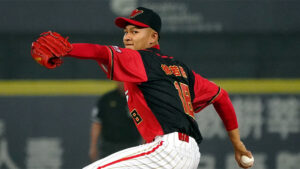
How to measure mound distance and points to note
In junior high school baseball, accurately measuring the distance from the mound to home plate is extremely important for maintaining the quality of games and practice sessions.
Accurate measurement is essential to provide a level playing field and maximize athlete performance.
Here we will explain in detail how to measure mound distance and what to be careful about.
Accurate measurement procedure
-
Gather the necessary tools : To measure the mound distance, you will need a measuring tape or a laser distance finder. Make sure the measuring tape is of good quality to ensure accurate measurements.
-
Confirm the reference points : Before you start measuring, clearly define the center of the mound and the center of home plate. The center of the mound is the center of the rubber plate, and the center of home plate is the back edge of home base.
-
Start measuring : Hold the measuring tape in the center of the mound and stretch it towards the center of home plate. If using a laser rangefinder, measure from the center of the mound to the center of home plate.
-
Check the distance : If you are using a measuring tape, make sure the tape is level to the ground before reading the distance. If you are using a laser rangefinder, make sure the laser is pointed straight ahead and read the distance displayed.
-
Record your result : Record the measured distance and check that it matches the official distance set (usually 18.44 metres). If there is a discrepancy, measure again to determine the exact distance.
Points to note when measuring
-
Check the ground condition : Make sure the ground you are measuring on is flat. Uneven surfaces will cause measurement errors, so it is important to prepare the ground beforehand.
-
Accuracy of measuring equipment : Make sure the measuring equipment you use is accurate, especially measuring tapes, to see if they have stretched or deteriorated over time and replace them if necessary.
-
Weather conditions : It is important to pay attention to the weather conditions when taking measurements. If it is windy, the measuring tape may shake, which may cause measurement errors. Therefore, it is best to take measurements on a day with calm winds.
-
Multiple measurements : By measuring multiple times, rather than just once, you can minimize errors. It is recommended that you check carefully, especially before an important match.
-
Setting the correct reference points : If the reference points are misaligned, the measured distances will not be accurate. Make sure that the center of the mound and the center of home plate are set accurately.
Based on the latest information, technology can also be used to improve measurement accuracy.
Laser distance meters are great tools for minimizing errors and taking fast, accurate measurements.
This will enable us to provide the best possible environment for our athletes to perform at their best.
As such, accurate measurement of mound distances is important to maintain a level playing field and support player safety and improved performance.
Following the measurement procedures and precautions and maintaining an appropriate distance will lead to an improvement in your competitive level.

Relationship between training and mound distance
For baseball pitchers, the relationship between training and mound distance is very important.
By training at the appropriate distance, you can improve the accuracy and speed of your throws, dramatically changing your performance in games.
In addition, approaching the sport from both the physical and mental aspects will lead to player development and injury prevention.
-
Training for short distance pitching : On a short mound pitcher must react quickly and throw fast. For this reason, the following training menu is effective:
- Sprint training : Repeated short-distance sprints improve explosive power and leg strength.
- Plyometric training : Incorporating jumps and box steps will improve your strength and reaction time.
- High-Intensity Interval Training (HIIT) : Short periods of high-intensity exercise to build endurance and improve cardiovascular fitness.
-
Training for long distances : Long distances on the mound require endurance and control, so the following training is recommended:
- Endurance training : Increase your endurance by doing long distance running or cycling.
- Flexibility training : Incorporate stretching and yoga into your routine to improve muscle flexibility and joint range of motion.
- Technical Practice : Focus on pitching curveballs to improve form and control.
-
Well-rounded training : Pitchers also need well-rounded training to cover both short and long distances.
- Cross-training : Combining different sports and activities to improve overall balance.
- Weight training : This will help improve your overall strength, focusing on your shoulders and arms.
- Mental training : We will conduct mental training to develop concentration and mental toughness.
A dual approach to physical and mental
When it comes to training, it’s important to approach it from both a physical and mental perspective.
-
Physical approach : In order to improve a pitcher’s performance, physical strengthening is essential. Specifically, attention should be paid to the following points:
- Nutrition : A balanced diet and proper supplements will help your body recover and grow.
- Rest and Recovery : Getting enough sleep and rest allows your body to repair itself and prevent injury.
- Individual Training Plans : We create individual training plans for each player to address their specific needs.
-
Mental approach : Pitchers are also required to be mentally strong. Here are some ways to strengthen your mentality:
- Visualization : Visualize the pitching scene in your mind and imagine yourself succeeding, which will boost your confidence.
- Mental coaching : Work with a specialist mental coach to learn how to handle pressure during matches.
- Relaxation techniques : Employ deep breathing and meditation to help ease tension before and during a match.
Recent research has shown that a combined physical and mental approach to training can significantly improve an athlete’s overall performance.
In this way, by gaining a deeper understanding of the relationship between training and mound distance and implementing an effective training menu, pitchers can maximize their abilities.

How to use mound distance in an actual game
In a baseball game, the mound distance has a big impact on the strategies of the pitcher and batter.
It goes into detail about pre-game preparation and review and how it affects pitcher and batter strategies.
Pre-match preparation and review
Pre-match preparation is key to performing at your best during the match.
It is especially important to check the mound distance, and you should pay attention to the following points.
-
Mound Distance Verification : Before the start of a game, we accurately measure the distance from the mound to home plate to ensure it complies with official rules. This is essential to provide a level playing field and keep pitchers in rhythm.
-
Check the condition of the mound : We check the height, hardness, slipperiness, etc. of the mound. This allows us to create an environment that is easy for the pitcher to throw. If there are any problems, we will make the appropriate repairs.
-
Warm-up : Warm up thoroughly before the game to loosen the muscles in your shoulders and elbows. Since junior high school players are still growing, warming up properly can help prevent injuries.
-
Mental Preparation : Before a game, pitchers also prepare mentally, doing relaxation routines and visualizations to improve focus.
Impact on pitcher and batter strategies
Mound distance has a direct impact on pitcher and batter strategies.
Let’s look at the impact from each perspective.
-
Pitcher’s strategy : When the mound distance is short, pitchers tend to use aggressive pitching, focusing on fastballs. This gives them an advantage over the batter because of their short reaction time. Conversely, when the distance is long, pitchers are required to use more curveballs and focus on control. By using curveballs effectively, they can throw off the batter’s timing and increase the chances of getting an out.
-
Batter’s strategy : Batters analyze the pitcher’s pitching patterns and plan strategies according to the mound distance. If the distance is short, they need to swing the bat faster to deal with fastballs. On the other hand, if the distance is long, their ability to deal with curveballs will be tested. For batters, concentration and reaction speed are important in determining the trajectory of the ball.
-
Defensive strategy : Mound distance also affects defensive strategy. If the pitcher mainly throws fastballs, the infielders will move forward and prepare to quickly deal with ground balls. Conversely, if the pitcher mainly throws curveballs, the outfielders will adjust their defensive position and prepare for fly balls.
Recent data and research shows that developing strategies based on mound distance can improve overall team performance.
If pitchers and batters understand their respective roles and execute optimal strategies, they can have a major impact on the outcome of the game.
As such, checking the mound distance and planning a strategy based on that is a very important element in a game.
Approaching a match with proper preparation and strategy can make a big contribution to your team’s victory.
